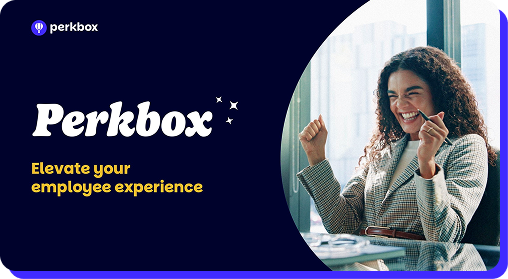What is an employee recognition program?
If you want to reap all the benefits that recognition and rewards bring to the table in a long-term, sustainable way, it's crucial that you set up your recognition programme the right way.
What happens if you don't? Recognition and rewards sound easy to give, something you don't need a programme or framework for. But if recognition is given inconsistently, or only used to patch up a broken work relationship, you're certainly not getting all the benefits from it — and you might even do more harm than good.
Without a framework, certain employees are overlooked or don’t receive equal recognition for equally important actions which aren’t directly related to the bottom line. Let that happen for a few months and you’ll get the exact opposite of what you want: employees who feel undervalued, disrespected and not seen. And it isn't great for teamwork or your workplace culture either.
So to make sure everybody gets the recognition they deserve, when they deserve it — let’s look at what you should keep in mind when setting up an employee recognition programme.

How to build an employee recognition program
Time to look at the specifics. You now know what you want to reward your employees for, and how. Now you have to make it happen. With the steps below, you'll set up a solid employee recognition scheme in no time — one that’ll help you improve your company culture.
1. Design a programme
When designing the programme, make sure that you do this not only for, but also with your employees. They know best what types of recognition works for them, and you want to avoid wasting time or money on things that don't have any impact.
Align every aspect of the programme below with your company values, and you'll be setting yourself up for success.
Allocate a budget
Be realistic: don't promise your employees rewards or bonuses that you won't actually be able to give — at least not to everyone when they would be entitled to it.
When defining your budget, look at how you can spend your money in a smart way that will benefit everyone in your business.
For instance, you could invest in a platform or employee engagement software like Perkbox’s, which can be used company-wide, and has perks and benefits that everyone will love.
This will enable you to build an employee recognition programme that can run for years and years, helping you reap the benefits on a long-term basis.

Set objectives
As we mentioned earlier, your employee recognition programme shouldn't be some trick or quick fix to cover up underlying issues in your business. But it's good to connect some goals to it.
Make these goals about turnover rates, employee retention and employee satisfaction. Do a survey before you start, and regularly check in with your employees to find out if they've been noticing any changes.
Ultimately, you’ll want to see people staying with the company for longer, and being happier there. Only then can you expect things like employee performance and productivity to increase too.
Outline policies
Your employee recognition programme should have some ground rules and policies to make sure people know what they can and can’t expect. Make sure your people understand how it works, and that this is not some system in which they can just hunt for extra perks.
2. Implement the plan
Now, things are starting to get serious. It’s time to start thinking about a start date. And who will be in charge of this employee recognition programme? Don't just throw this over to HR — it could be helpful to have people from different departments and different levels.
3. Measure results
Employee feedback is critical to the success of your employee recognition programme, so make sure to check in with them to ask how it's going. You can do this in open discussions, anonymous surveys, or anything in between.
This very much depends on your starting point and work culture, but make sure you use an employee recognition tool that gives you accurate and honest insights — not just the things you want to hear.
4. Choose the best employee recognition software
Here are a few ways Perkbox helps organisations promote a culture of reward and recognition.
1. You give your employees a voice
We’re all about making employee recognition a team effort, so that's what our programme is built on. This will be something that you all do together and that will give your employees the opportunity to lift each other up, instead of waiting for praise from higher up.
2. You easily identify areas for improvement
Does employee recognition and engagement sound a little abstract to you? We’ve made it easier to analyse.
3. You get real-time engagement data
Engagement is not something you work on once and then just hope for the best. You’ll want to keep working on it, and for that, you need accurate, live insights into the state of things. The Perkbox platform gives you exactly that.
4. You reduce employee turnover
One of the big perks of Perkbox is that we help you to keep your talent on board, by making sure they feel valued and respected. Our programme is built to make recognition easier, and to provide the rewards people actually want, so you can build stronger connections.
Best practices for setting up an employee reward and recognition framework
Let’s look at some practical ideas and employee recognition examples that show how you can best set up a recognition scheme that benefits everyone involved.
Establish criteria for what constitutes rewardable behaviour or actions
Starting a recognition programme is not about giving constant recognition and rewards. You’ll first want to make clear what behaviour and actions will be rewarded — so you don't end up giving compliments for everything. Your praise could lose value if you do.
When establishing what deserves praise, ensure every department and every employee is able to meet your criteria.
So instead of focusing on just targets, also look at what behaviour is in line with your company values. It's best to make this as concrete as possible. Perhaps you can write down examples of what behaviour you would like to see, in the form of dos and don'ts in certain situations.
How would you like your employees to talk to your customers and to each other? Once you have this on paper, communicate this to your employees. It might feel like you're giving them the answers to the test, but you want to avoid turning this into a guessing game.
Are some of your employees performing steadily and really doing their best, but is it hard to reward them because their work or personality is more in the background? Then establish that you shouldn't only be giving people recognition for what they do at work.
Celebrate their anniversaries at work, remember their birthday and if you know they're running a marathon next weekend, send them a card wishing them luck. Your employees are people first, and deserve praise for more than just their work.

Don’t overdo it
Take a good hard look at that list you established in step one, and ask yourself how realistic it is. How will this play out in the real world? You might have become over enthusiastic and found countless scenarios in which you would give praise and recognition. Time to cut some out of there.
Yes, we need kindness and respect on a daily basis, but not rewards. If you reward every little thing, soon it will lose its value.
The actions that you pointed out earlier also shouldn't be quick-fixes to issues you're having within your business. If there's any major issue, work on that separately. Don't try to trick your employees.
Focus on the things that are the closest to the values you want your employees to follow. Also, explain why they will be rewarded for these things, so your employees can also help each other.
Have something to work towards
Getting rewarded for excellent customer service or a great project is great and should definitely be done, but recognition should also involve some tasks that are a bit more big-picture thinking.
Step away from the daily tasks and think about what you'd want your team to achieve in the next year, depending on what your objectives are. Do they know that this is the big master plan, or are they more stuck in their daily tasks?
Tell your staff about your hopes and dreams for the company, and give them an incentive for when they help you reach this. A wine tasting session, a team weekend or dinner at that fancy place you all keep looking up on Instagram?
You can also apply this to their own hopes and dreams — don’t forget to give praise when employees are on the path of self-development and learning new skills.
Ask your employees what would get them excited when it comes to rewards for these things. This is crucial, because nobody will be motivated to go that extra mile if there's only a canteen voucher at the end of it.

Set challenges
How about a little competition? If it fits your company culture — and it's important that it does. You can set up some fun challenges for your staff to meet, with rewards that drive up the competitiveness a little. If done right, this will certainly add an element of fun during the workday.
Give each department its own challenges. Can finance collect invoices in a certain time period? How many five-star ratings can your customer service reps get this month? And who comes up with the funniest and most effective copy for this month's newsletter?
All of these challenges are a way to look differently at your day-to-day tasks. It helps your staff step out of their routine and can also freshen up their creativity.
You can set up individual challenges, team challenges and even company-wide ones. Do keep in mind that they shouldn't be an obvious attempt at making your employees work harder for nothing: whatever the challenge is, it should fall within their usual tasks and job description — you should just look at how they can do those better.
As for rewards, keep these fun as well. Don't host challenges to give out promotions and bonuses. These should not be won in a competition, but earnt with long-term behaviour and performance. You can send your employees to a nice dinner instead, or give them a nice experience day voucher.
Give recognition in line with your company values
If your values are clear, it becomes easier to find out what you should be giving praise for. If innovation is one of your core values, then praise the people who dare to experiment, or proactively suggest new ideas. If care for customers is on your list, give praise to those employees who check in with your customers regularly, and don't just wait for a call.
Your company values should be at the centre of your recognition programme. You should be able to draw a straight line between them and the actions you will be rewarding. Visualising it like this can help make it easier to decide what you'll include in your programme.
Find a way to celebrate achievements
Now you’ve established what achievements you want to recognise, it's time to pick the actual rewards.
You could classify the achievements you've picked, and put rewards in place based on how hard employees had to work for this, or how proud they will be of the work.
It’s good to get creative with the types of rewards you give, but make sure they’re always in line with what your employees actually want to receive, so talk to them about it. Try to make the selection of rewards as diverse as possible, to cater for everyone’s needs. With Perkbox, for example, your employees can choose from over 8,500 rewards.
Last but not least, before we dive into some ways you can celebrate achievement, make sure it's not all about tangible rewards. At the very base of your employee recognition programme, there should be a culture that is respectful and kind. One where people will give compliments and thanks regardless of any recognition programme.
If that's not the case yet, rewards will most likely feel meaningless or as a way to polish up a bad culture.

Encourage employees to give recognition and rewards
Don't make recognition solely a thing that managers have to do. When setting up your recognition programme, explain to your staff that you expect them to actively participate, and not just lean back and wait for the compliments to come their way.
Remind them how valuable positive feedback from peers is. People who work together every day might know more than most what’s actually going on. It’s always nice to get compliments from the people who are closest to you.
You don't want to make things awkward, of course, so explain to your employees how they can fittingly do this. For instance, they can use the Perkbox to easily put someone in the spotlight. Then, you could do weekly or monthly summaries of all the accomplishments of everyone and celebrate them together. That’s something we do (and we like to think we know a fair bit about employee recognition!).
You can also get your employees to be more involved in the process by allowing them to nominate others for certain awards using the Perkbox app.
Celebrate out-of-work achievements
In a company where it's less about hard targets, it can be a struggle to really celebrate things. What qualifies as success for your team? Make things a little easier by viewing your employees as real people, who have real challenges and successes outside of the workplace.
Has someone quit smoking recently? Are they learning a new language? Perhaps they’re doing a lot of community work? Congratulate them! This way you build trust and also show that you don't only care about them when they're on the work floor.
Simple courtesy
Another way to step out of the mindset that recognition should only be target-related, is by doubling down on simple courtesies. Say good morning and good night, say thank you to your peers, and ask people how they are. A little goes a long way!
If you want to build an environment in which recognition really thrives, make sure the basics are in place as well. A compliment from a manager doesn't mean much if they've never really spoken to you before.
Now, how do you implement simple courtesies into your employee recognition programme? Of course, you can't force them. You can't make it a rule to greet everyone when you come in. it has to be genuine.
The best way to handle this, is by simply talking about it. Don’t name names, don't point fingers. Have a positive, optimistic and open conversation of how little things like this would make the workplace a more fun way to be.
Not everybody has to be friends, but everyone can be friendly. Talk about this when you're setting up the programme and when evaluating how it's going.

One-to-one recognition
It's nice to know a compliment is just for you. That your specific contribution to a project, your creative idea, or your solution, was valuable. So as part of your employee recognition programme, sit down with employees in one-to-one meetings to give them that compliment.
Many people are afraid to talk to their managers, because usually those conversations mean they've done something wrong or there's room for improvement. Change that by having positive one-on-ones with your employees where you make it about their achievements.
Not only will this give them a boost and the motivation to try even harder next time, it will also build a safer environment in which you can give more constructive feedback.

